Australian home front badges of the First World War
From the early months of the First World War men perceived to be ‘shirkers’ or cowards were increasingly ostracised. The practice of sending white feathers symbolising cowardice, or shaming men in the street to enlist were commonplace. This worsened as casualty lists grew, bringing the war closer and closer to home. Non-uniformed men backing the war effort or those unable to do so sought ways to promote their contribution to relieve them of the constant fear of public humiliation.
Supported by the government, the men were issued badges marking, at a glance, their willing participation or their unsuccessful attempts at enlistment. Commemorative badges were also introduced for female relatives, reflecting the service and sacrifice made by families. Badges were numbered on the reverse and the names of recipients recorded, though not all records have survived.
Imperial Silver War Badge
The Silver War Badge was first issued in 1916 and worn on civilian dress only. The badge was granted to those across the British Empire who had served since 4 August 1914 and subsequently honourably discharged. Commonly referred to as the Wound Badge, the recipients were frequently discharged through being permanently unfit for duty due to war injury or illness. Records for Australian issued Silver War Badges are held at the Melbourne offices of the National Archives of Australia.
Discharged Returned Soldier Badge
Better known as the Returned from Active Service Badge, it was first issued by the Australian government in 1916. Potential recipients were required to lodge their official discharge papers with an application prior to issue.
Discharged Returned Sailors Badge
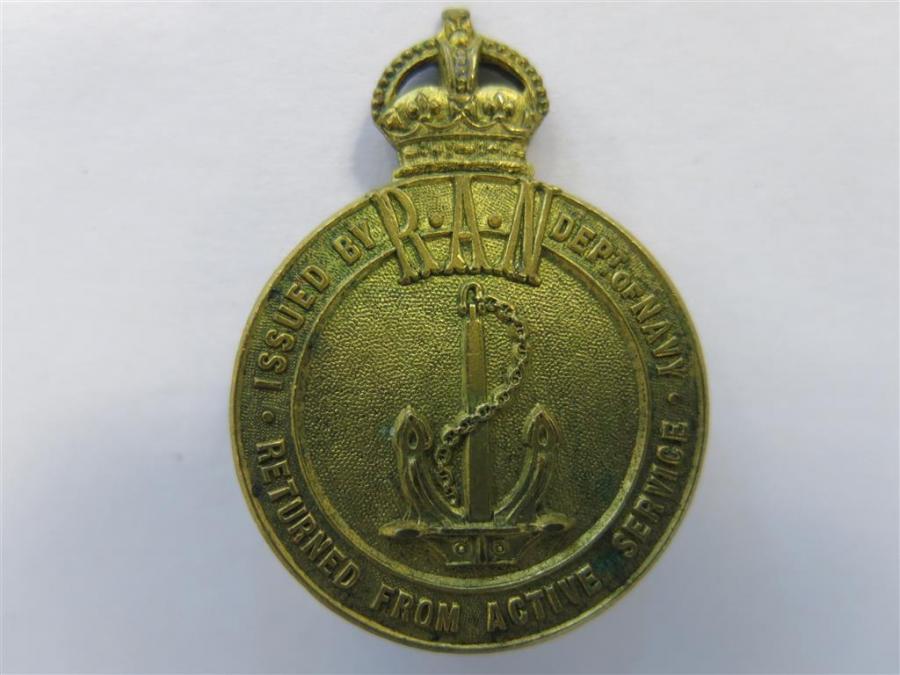
Issued under the same criteria as the Discharged Returned Soldiers Badge.
Volunteer Home Service Badge
Badge issued to employees of the Department of Defence who had volunteered for active service abroad but who had been denied due to their services being required in Australia.
Volunteer Medically Unfit Badge
Issued to those who had volunteered for active service abroad from 1 July 1915, but who were deemed medically unfit.
Volunteer Munitions Worker Badge
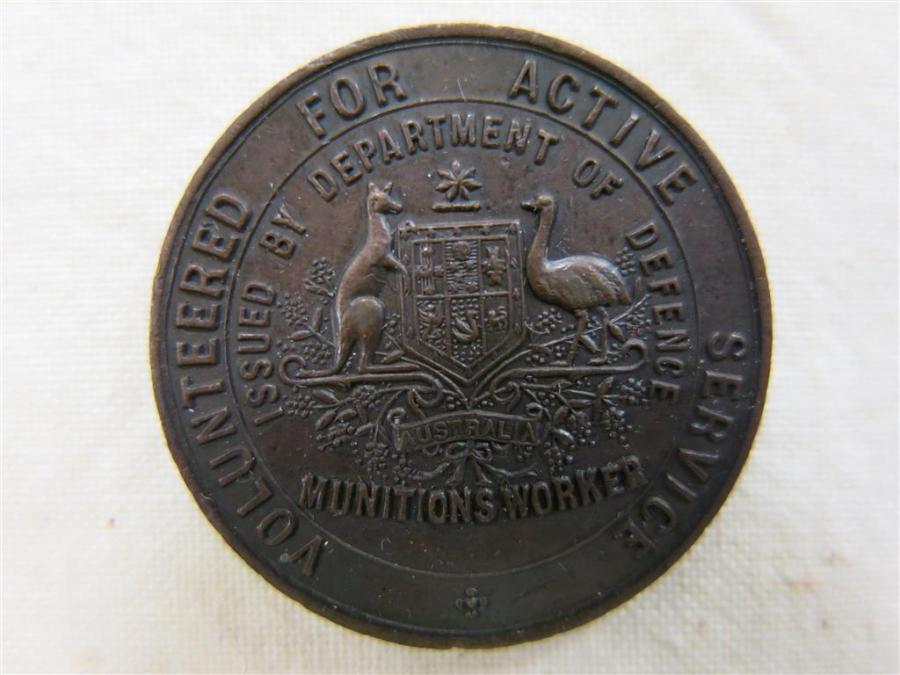
Issued from 1916, recipients volunteered for active service abroad but were notified in writing that they were debarred from enlisting due to their services being required in munitions manufacture.
Overseas Munitions Worker Badge
This badge was issued to each successful applicant of the Australian Government sponsored scheme to send skilled workers to the United Kingdom for munitions manufacture. The scheme was instituted in August 1916, centralising and formalising the practice of UK firms privately recruiting Australian skilled labour.
War Workers Badge: Navvies and Labourers
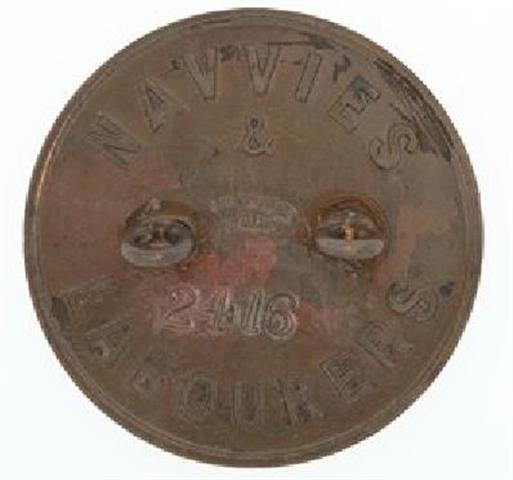
The War Workers Badge was issued to persons who participated in the Australian Government's scheme to supplement Britain's labour force. The scheme was initiated under similar conditions as the overseas Munitions Workers Scheme.
Demobilised Soldiers Badge “A”
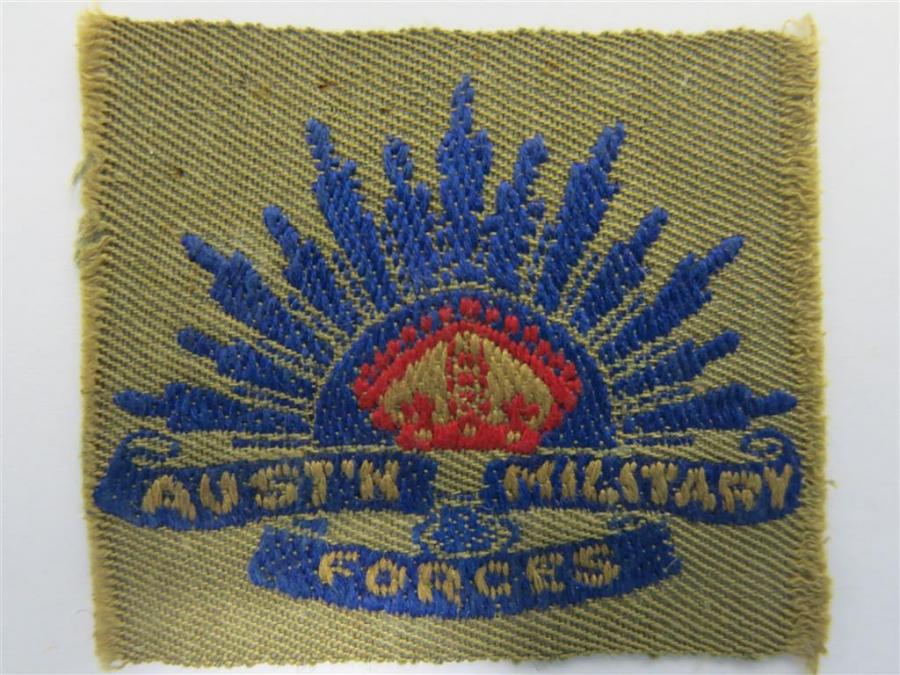
Embroidered Rising Sun variant shoulder badge of blue and red worn on a military uniform. The badge signifies that the wearer enlisted in the AIF or Royal Australian Garrison Artillery but the war ended before he could see active service.
Demobilised Soldiers Badge “B”
This badge was issued to new recruits training in Australia at the time of the Armistice on 11 November 1918 or those who had enlisted but had not yet been called into camp for training. It was also issued to serving members of the Royal Australian Garrison Artillery who had volunteered, but not embarked, for service in the AIF Siege Artillery Brigade.
Voluntary Ballot Enlistment Scheme Badge
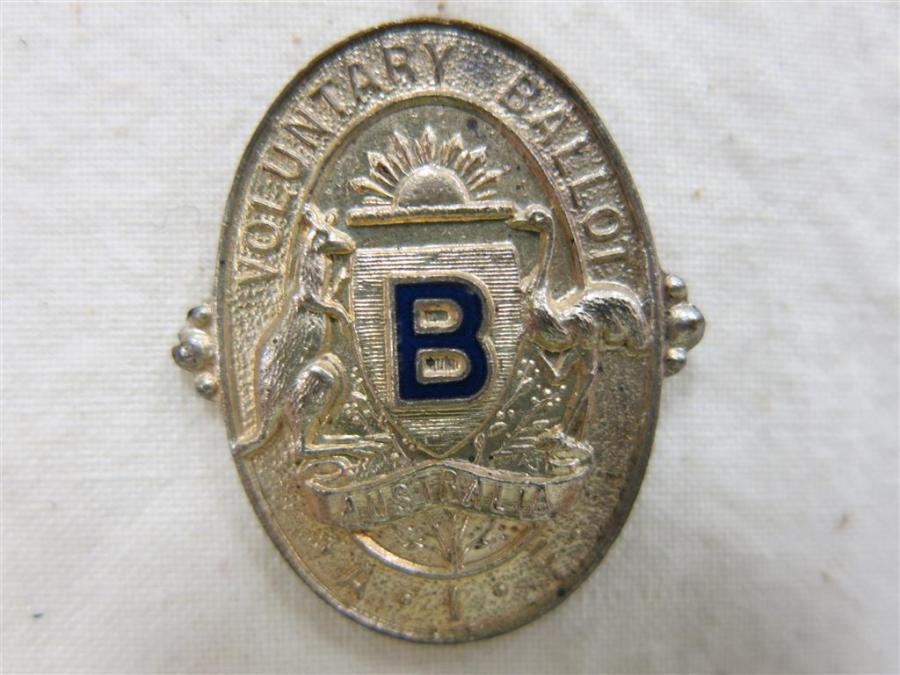
In 1918, following the defeat of two conscription plebiscites in 1916 and 1917, the Voluntary Ballot Enlistment Scheme was launched. The scheme involved men voluntarily submitting their names to be drawn out of a ballot for enlistment. The badge was issued to all men who participated. For more information see: https://www.awm.gov.au/journal/j38/vebs.asp
War Service for Australia Badge
The War Service for Australia badge was issued from circa 1916 to civilian members of staff working at AIF Headquarters in Horseferry Road, London. The recipients were usually female and local residents of London.
Australian Mercantile Marine War-Zone Badge

From May 1919 these badges were issued to officers and seaman of the Merchant Navy who had served in ships in a defined war zone area during the First World War.
Transport Wireless Operators Badge
Issued from 1919 to civilian wireless operators who had served for 12 months on troopships, transports or Merchant Navy vessels and had sailed through a defined war zone.
Navy Transport Service Badge
Issued to civilian personnel between 18 and 45 who had served on troop transport vessels.
Naval Transport Coaling Battalion Badge
In June 1916 a quasi-military Naval Transport Coaling Battalion operating under the auspices of the Navy Department was formed to operate from Sydney. The short-lived battalion was disbanded in 1917 and the badges forfeit following industrial unrest.
Rejected Volunteers Association Badge
State based Rejected Volunteers’ Associations emerged during the war to represent those who had volunteered for military service but were rejected. A national association was formed from the state branches in October 1918. The associations produced their own badges such as this example from the NSW branch.
Badges for female relatives:
Commemorative badges issued to the nearest female family members were issued from 1917. The Female Relatives Badge or ‘Mothers badge’, issued to a family member of active servicemen or women, was first promulgated in 1917. This was followed by the Mothers and Widows Badge, issued from 1919, representing those that were killed or died in service. See:
https://www.awm.gov.au/encyclopedia/badges/mothers_widows
https://www.awm.gov.au/encyclopedia/badges/female_relative/
Records relating to the issue of badges
Though not all records relating to the issue of First World War badges have survived, many extant records are held by the National Archives of Australia. For those wishing to research the identity of a recipient see:
https://www.awm.gov.au/blog/2015/06/12/reuniting-families-lost-medals-and-other-items/







